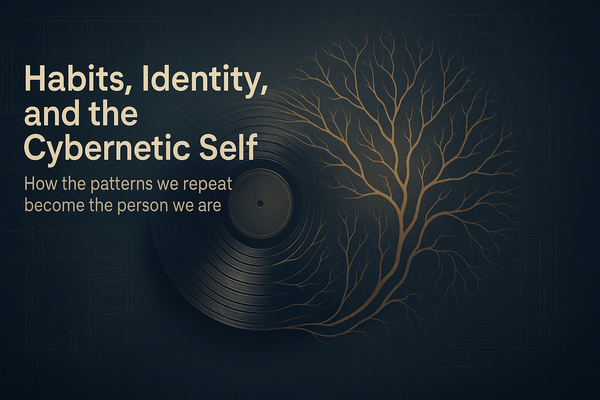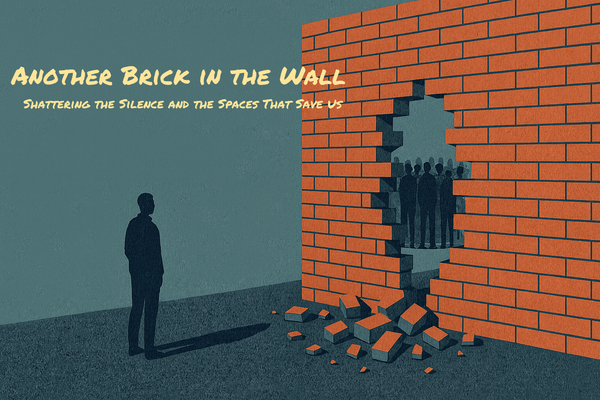The Connector's Edge: How Curiosity and Care Outperform Strategy Alone
Great leaders do more than analyze data. They connect patterns others miss. With curiosity and genuine care, they anticipate change, build trust, and guide teams through complexity with clarity and resilience.

"At the heart of great leadership is a curious mind, heart, and spirit." - Chip Conley
Every boardroom has them: leaders armed with market research, competitive analyses, and five-year strategic plans. They speak fluently about KPIs, market positioning, and operational efficiency. Yet somehow, their teams feel disconnected. Their customers switch to competitors. Their strategies, no matter how brilliant on paper, struggle to gain traction in the real world.
What's missing? The ability to see how everything connects.
The most successful leaders don't just analyze data points, they recognize patterns across seemingly unrelated domains. They understand that a conversation about supply chain disruption might reveal insights about team psychology, or that customer behavior changes could signal broader cultural shifts. They literally see around the corner, anticipating changes before they become obvious to everyone else.
But pattern recognition alone isn't enough. The leaders who translate these insights into extraordinary results combine their ability to see connections with genuine curiosity about people and authentic care for their success. This isn't soft leadership; it's the hardest edge a leader can have in today's interconnected world.
Why Curiosity Wins
Strategy tells you what to do. Curiosity tells you why it matters to the people who will make it happen, and reveals connections others miss.
The most effective leaders possess a rare form of intellectual curiosity that goes beyond asking good questions. They naturally see patterns across different domains, recognizing how customer psychology connects to market trends, how team dynamics mirror organizational health, how individual stress responses reflect broader cultural shifts.
This pattern recognition creates a significant advantage. While others analyze data points in isolation, curious leaders see the interconnected web that determines outcomes. They ask questions like: "What underlying forces are driving this behavior?" and "How might this change in one area cascade into others we haven't considered?"
When leaders approach their teams, customers, and challenges with this systems-level curiosity, something remarkable happens. They don't just gather information, they uncover insights that lead to breakthrough solutions. They anticipate challenges before they become crises and identify opportunities while others are still focused on current problems.
Curiosity builds trust because it demonstrates that a leader sees the bigger picture and values how each person fits within it. When people realize their leader can connect their individual contributions to larger patterns of success, they engage at a deeper level.
This isn't just intellectual curiosity, it's strategic intuition that can be developed through intentional practice.
"I have no special talents. I am only passionately curious." Einstein's words capture the essence of this leadership advantage: it's not about being the smartest person in the room, but about being the most genuinely curious about how the room actually works.
Why Care Changes Everything
Strategy focuses on outcomes. Care focuses on the people who create those outcomes.
Leaders who genuinely care about their people's growth, well-being, and success create something that no strategic plan can manufacture: loyalty. Not the kind of loyalty that comes from fear or financial incentives, but the kind that inspires people to go above and beyond because they want to, not because they have to.
This care extends beyond the team to customers. When Southwest Airlines empowers employees to show genuine care for passengers, it doesn't just create satisfied customers, it creates brand evangelists. When a local business owner remembers a customer's name and preferences, they're not just making a sale, they're building a relationship that withstands competitive pressures.
Care also changes how problems get solved. Teams that feel genuinely supported by their leaders are more likely to take smart risks, admit mistakes quickly, and collaborate effectively when challenges arise. They become more resilient because they know their leader has their back.
The misconception is that care makes leaders soft. In reality, it makes them more effective. People work harder for leaders who care about them as individuals, not just as resources.
The Pattern Recognition Advantage
The leaders who consistently "see around the corner" aren't fortune tellers, they're pattern processors. They understand that everything is connected, and they've trained themselves to recognize how changes in one domain will ripple through others.
This capability transforms how they approach both strategy and leadership. Instead of reacting to events, they anticipate them. Instead of managing in silos, they think in systems. Instead of solving problems in isolation, they address root causes that span multiple areas.
Consider how this plays out in practice. While most leaders see declining employee engagement as an HR issue, pattern-recognizing leaders might connect it to changes in customer feedback, shifts in market conditions, or even broader cultural trends. They address the engagement issue, but they also adjust strategy based on what those patterns reveal about upcoming challenges and opportunities.
The key is combining this pattern recognition with human connection. Leaders who can see the big picture but can't translate it into terms that resonate with their people will struggle to execute their insights. The most effective leaders bridge that gap through curiosity about how patterns affect individuals and genuine care for helping people navigate change successfully.
As Steve Jobs understood: "You can't connect the dots looking forward; you can only connect them looking backwards." But leaders who develop pattern recognition skills can see emerging dots before others even notice them, giving their organizations a significant competitive advantage.
The Strategy-Connection Balance
None of this means traditional strategy doesn't matter. The most effective leaders combine systems-level thinking with deep human connection. They use pattern recognition to inform their strategy and genuine relationships to execute it.
Think of pattern recognition as the radar system and connection as the navigation. You need both to reach your destination successfully. Radar tells you what's coming; navigation gets you there safely with everyone on board.
Connected leaders don't abandon data and analysis, they enhance it with insights that span multiple domains. They don't ignore market forces, they understand how those forces interconnect and affect real people. They don't skip hard conversations about performance, they approach them with curiosity about underlying patterns and care for the person's development within the larger system.
This balance shows up in how they communicate vision. Instead of presenting isolated strategic initiatives, they help people understand how different pieces connect and why each person's contribution matters to outcomes that might not be immediately obvious.
As systems thinking pioneer Peter Senge observed: "Learning is all about connections, and through our connections with unique people we are able to gain a true understanding of the world around us." This applies perfectly to leadership: the strongest strategies emerge from understanding how human connections create systemic change.
Practical Takeaways for Leaders
Start with pattern questions, not linear answers. Before your next team meeting or customer conversation, ask yourself: "What connections might I be missing?" and "How might changes in seemingly unrelated areas affect this situation?" Then ask your team questions that explore these connections.
Develop systems curiosity. When facing a challenge, resist the urge to find quick fixes. Instead, ask: "What patterns led to this situation?" and "What other areas might be affected by the same underlying forces?" This broader view often reveals more effective solutions.
Connect dots for others. When you see patterns that others haven't recognized yet, help them understand the connections. Explain not just what you think will happen, but why you see those relationships. This builds both understanding and trust in your insights.
Make time for cross-domain learning. Regularly engage with ideas outside your industry or functional area. The most surprising insights often come from applying patterns from completely different domains to your current challenges.
Show up during complexity. When situations become chaotic or uncertain, your ability to see patterns and maintain care for people becomes most valuable. Help others navigate complexity by pointing out connections they might miss while supporting them through the uncertainty.
Celebrate human moments. Acknowledge birthdays, work anniversaries, and personal milestones. Remember what matters to people outside of work. These small acts of care compound into significant trust.
Listen with curiosity. Roy T. Bennett wisely noted: "Listen with curiosity. Speak with honesty. Act with integrity. The greatest problem with communication is we don't listen to understand. We listen to reply. When we listen with curiosity, we don't listen with the intent to reply. We listen for what's behind the words."
Connect strategy to system understanding. Help people understand not just what they're doing, but how their work connects to larger patterns of success. Show them how their individual contributions influence outcomes across multiple areas, sometimes in ways that aren't immediately obvious.
Celebrate both individual moments and system successes. Acknowledge not just individual achievements, but moments when the team demonstrates genuine interconnection and collaborative pattern recognition.
The Connector's Advantage
In an era of rapid change and increasing complexity, the leaders who thrive will be those who can see patterns across domains while genuinely caring about the people affected by those patterns. These aren't just analytical skills—they're the cognitive capabilities that can't be automated and the human connections that can't be replicated.
Strategic thinking can be taught. Pattern recognition can be developed. But the combination of seeing around the corner while staying grounded in authentic relationships—that's the leadership differentiator of the future.
The question isn't whether you have a good strategy. The question is whether you can see the connections others miss and whether people trust you to guide them through complexity toward opportunities they haven't recognized yet.
That trust comes from showing people you understand both where the world is heading and how they can thrive in that future.
The leaders who change everything aren't the ones with the best plans. They're the ones who see what's coming and care deeply about who's coming with them.
So ask yourself: What patterns are you missing? Who are you bringing along? And what will you do tomorrow to lead with both curiosity and care?
Inspired by Malcolm Gladwell's insights in The Tipping Point about how small changes can make a big difference - the connector's edge in leadership often comes from recognizing the seemingly minor human connections and patterns that create transformational change.




